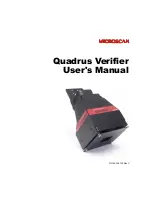
© 2019 GeoSLAM Ltd
3
ZEB‐HORIZON User Manual v1.2
1
INTRODUCTION
The ZEB‐HORIZON provides a rapid and simple means of capturing 3D point cloud data. Data is captured as the
user walks through the area of interest. The ZEB‐HORIZON negates the need for time consuming scanner set‐ups
and data registration associated with traditional terrestrial laser scanning methods.
Provided the simple guidelines set out in this manual are adhered to, accurate 3D point clouds can be generated
in a fraction of the time taken with traditional terrestrial laser scanning methods.
Maximum range
100m
Points per scan line
937 (0.38
o
interval)
Field of view
360
o
x 270
o
Scan rate
300,000 points/s
160 lines/s (16 lines @ 10Hz)
Scan range noise
±30mm
Laser safety
classification
Class 1 Eye‐safe per IEC 60825‐1:2007 & 2014
Laser wavelength
903nm
Operating
temperature
0
o
C to +50
o
C
Ingress protection
IP54
Power supply
14.8VDC ~ 1.5A
Weight
Scanning head with handle 1.49kg
Data logger
0.72kg
Battery
0.55kg
Carry case and contents
4.2kg
Dimensions
Scanning head 216x108x266mm (153mm excl handle)
Carry case and contents 470x220x180mm
Battery life
Approximately 3 hours continuous use
Table 1-1: Specification
1.2
PRINCIPAL OF OPERATION
The ZEB‐HORIZON consists of a 2D time‐of‐flight laser range scanner rigidly coupled to an inertial measurement
unit (IMU) mounted on a motor drive. The motion of the scanning head on the motor drive provides the third
dimension required to generate 3D information. A novel 3D simultaneous localization and mapping (SLAM)
algorithm is used to combine the 2D laser scan data with the IMU data to generate accurate 3D point clouds.
The ZEB‐HORIZON captures raw laser range measurement and inertial data. This data must be processed using
GeoSLAM’s SLAM algorithm to convert the raw data into a 3D point cloud. The data is processed using the
GeoSLAM Hub processing application.
1.1
SPECIFICATION




































